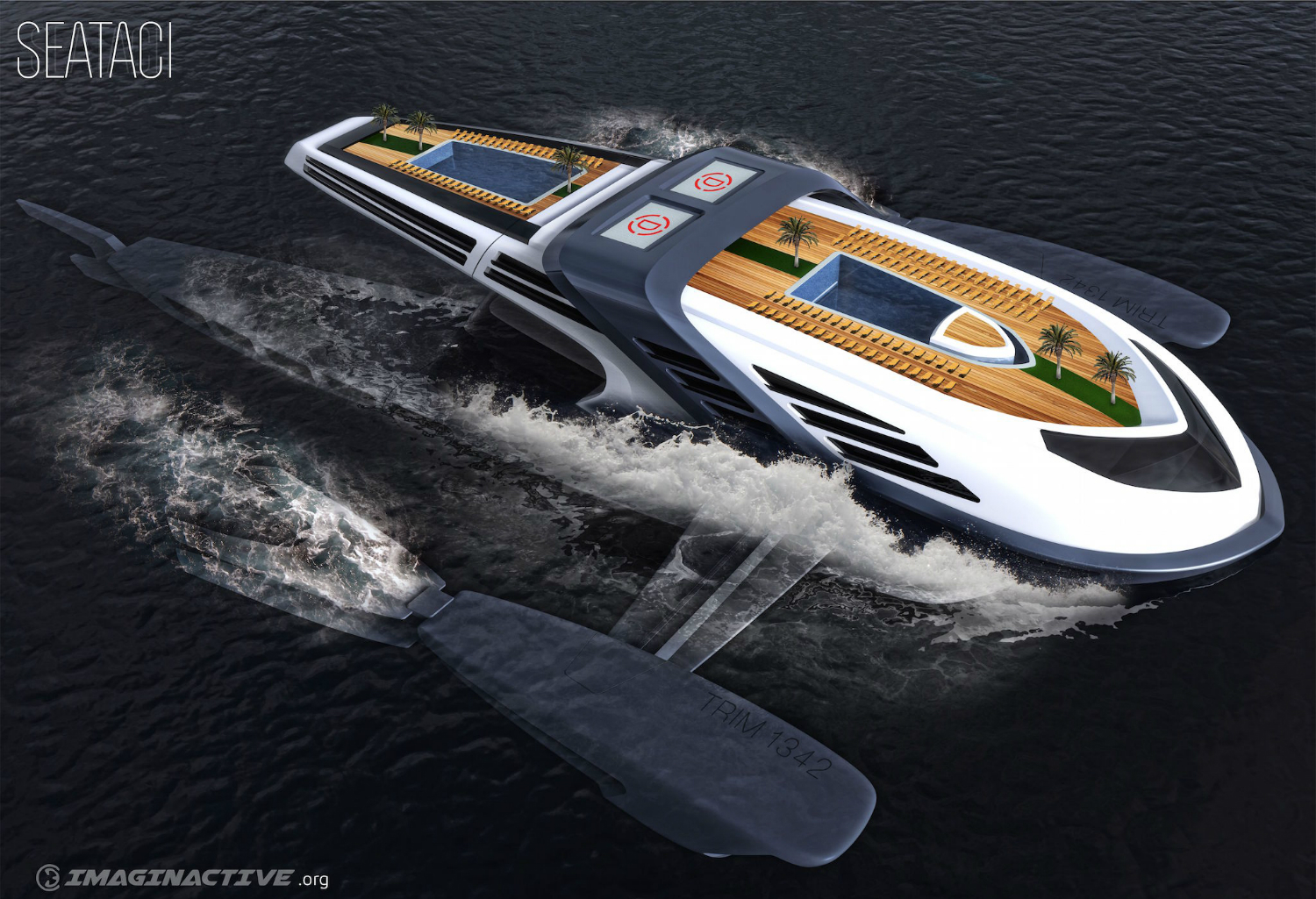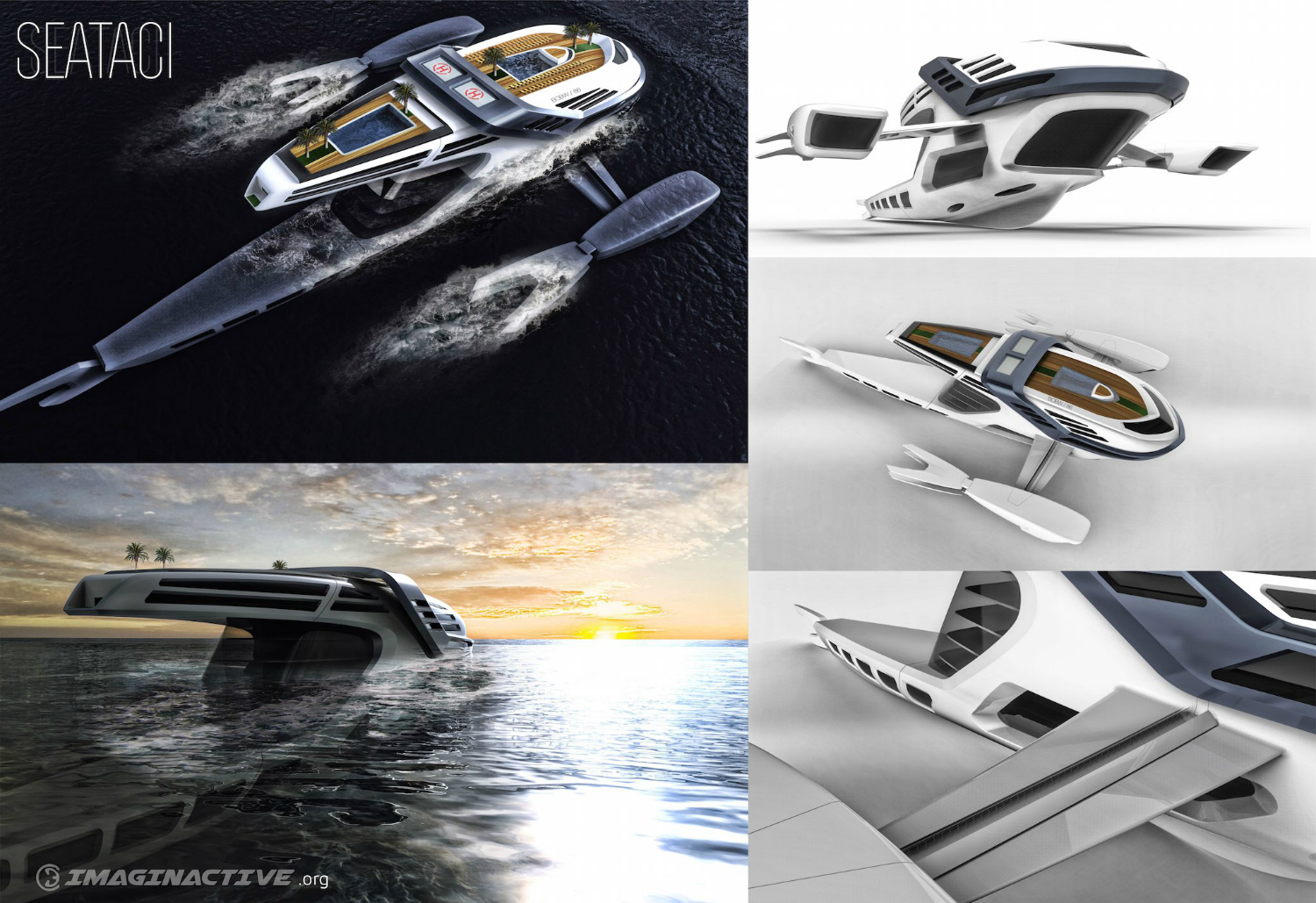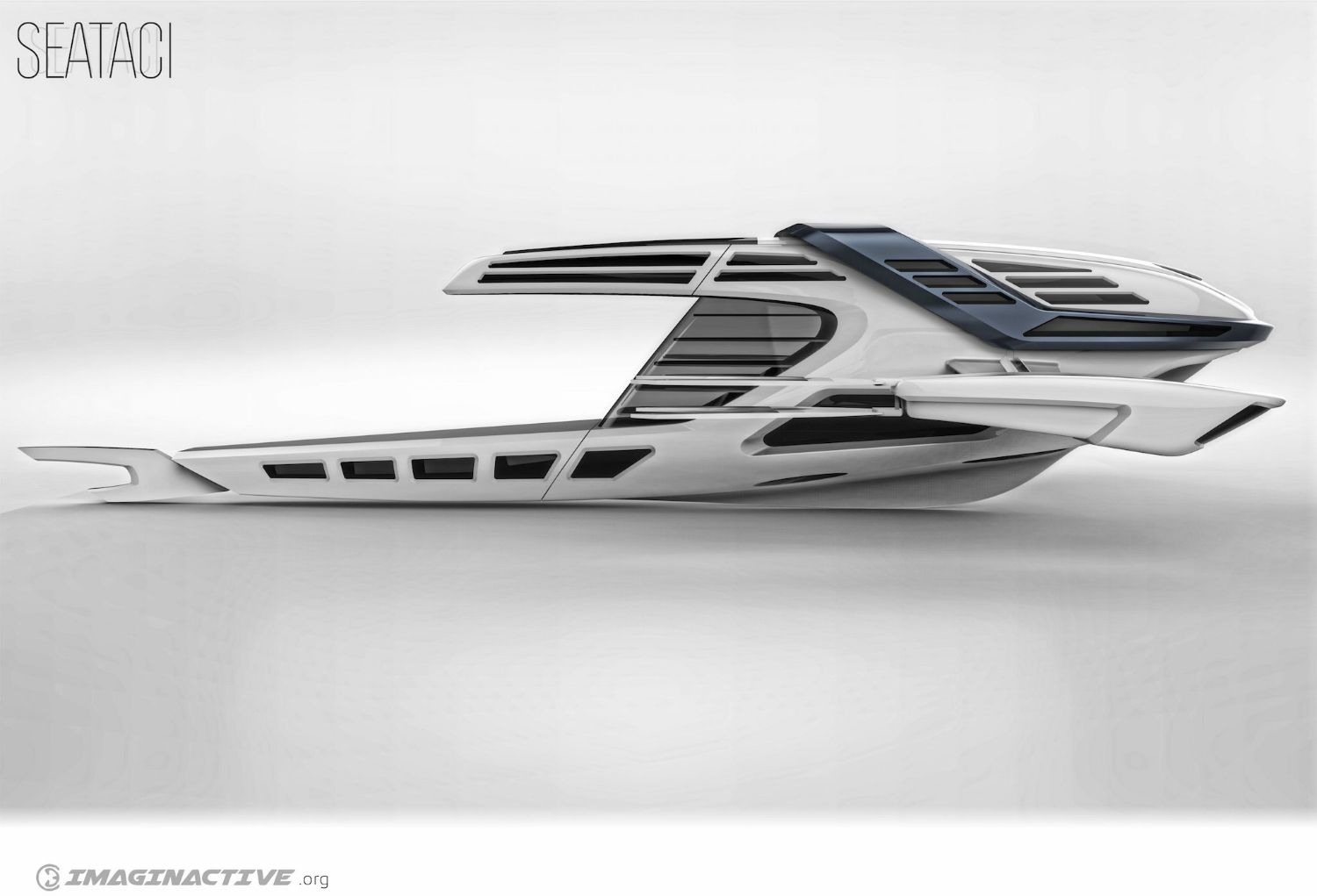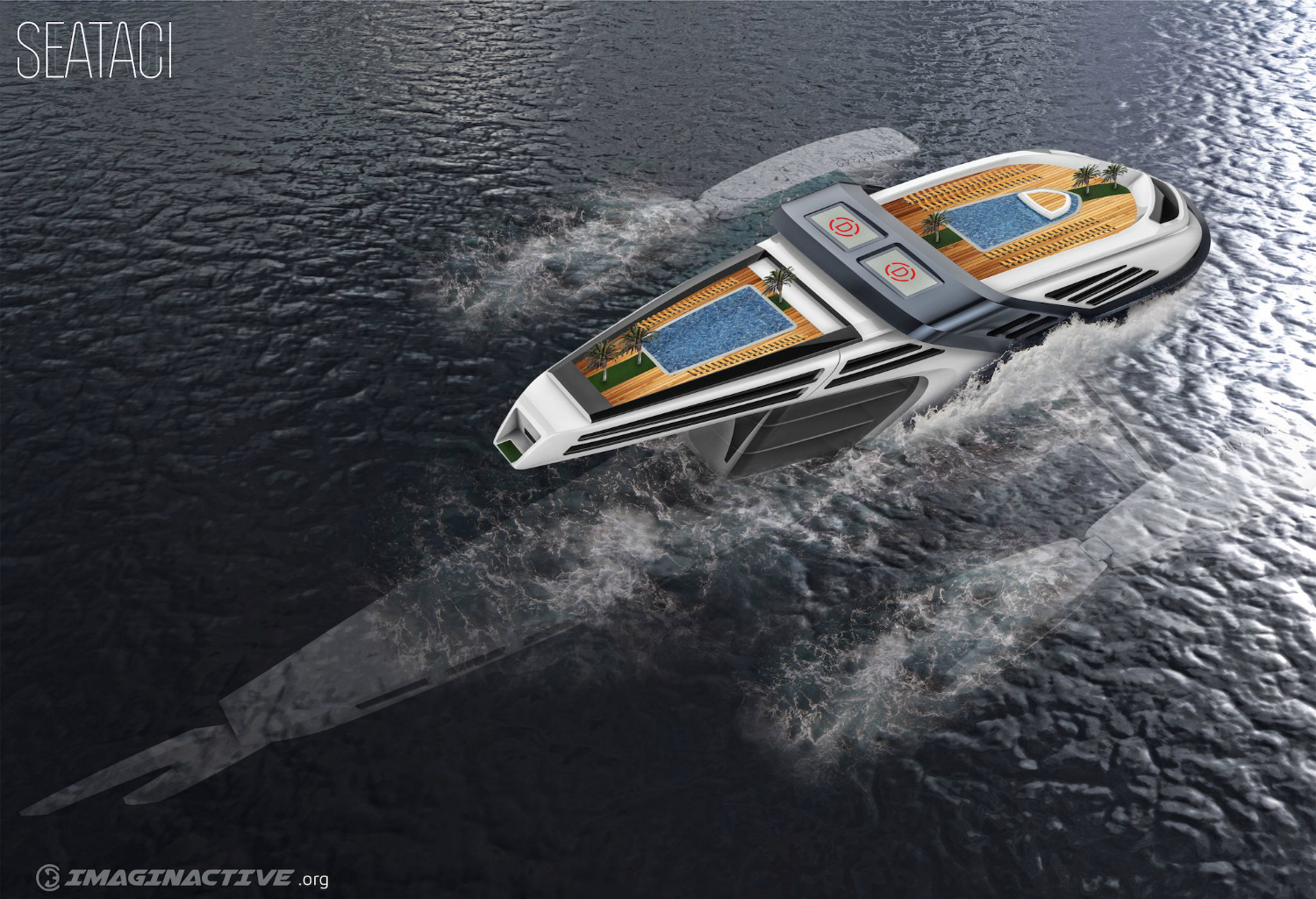Bombardier’s original vision for the Imaginactive Seataci superyacht came when he was scuba diving. He wondered about the possibility of eco-friendly propulsion systems for cruise ships that could navigate shallow waters. Bombardier was apparently thinking about how cruise ship passengers could view the underwater wonders without their vessel simultaneously destroying them.
Under further consideration, the designer/innovator realized the potential for such a craft used in scientific research and experimentation. The Seataci’s whale-tail-action engines would be located in retractable pods on either side of the vessel’s upper section.
According to Bombardier, with the biomimetic system, the Seataci could travel in shallow waters without damaging power and navigation components while likely making less underwater noise and possibly operating more efficiently than conventional propellers.
As envisioned by Bombardier, Seataci’s lower section would have expansive observation areas and some passenger cabins. Overall the Seataci concept as illustrated would have a dozen passenger cabins plus crew living quarters.
The design includes two large swimming pools and space for two personal drone landing pads on the top deck. He also foresees an application as a landing platform for drones to allow people to visit small islands without needing to dock or disperse tenders. With cruise ships more than research vessels in mind, Bombardier also envisioned tropical gardens around the pools.
The Seataci’s lower hull would use water as ballast to submerge or rise while the pods on the upper section of the ship would serve the dual purposes of stabilization and to keep the ride smooth. The scale of the structures would be large enough that passengers and crew could move into either pod for various raised views.
Bombardier acknowledges that developing a propulsion system of this type at a scale large enough to move a superyacht involves a significant risk. His argument is that because current propulsion systems are not eco-friendly and also restrict access to shallower waters, that if the oscillating system could work, the risk would be worth it.







